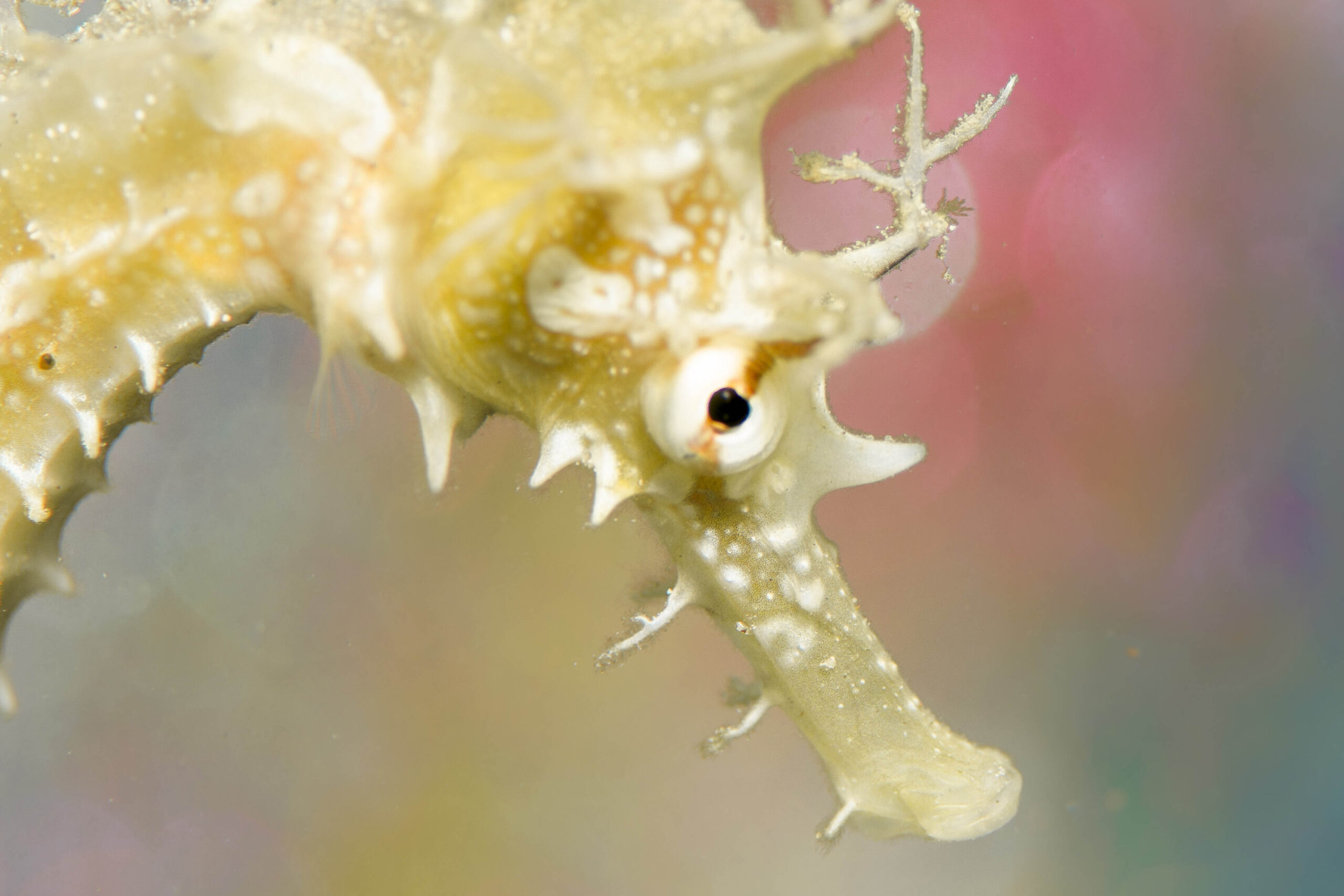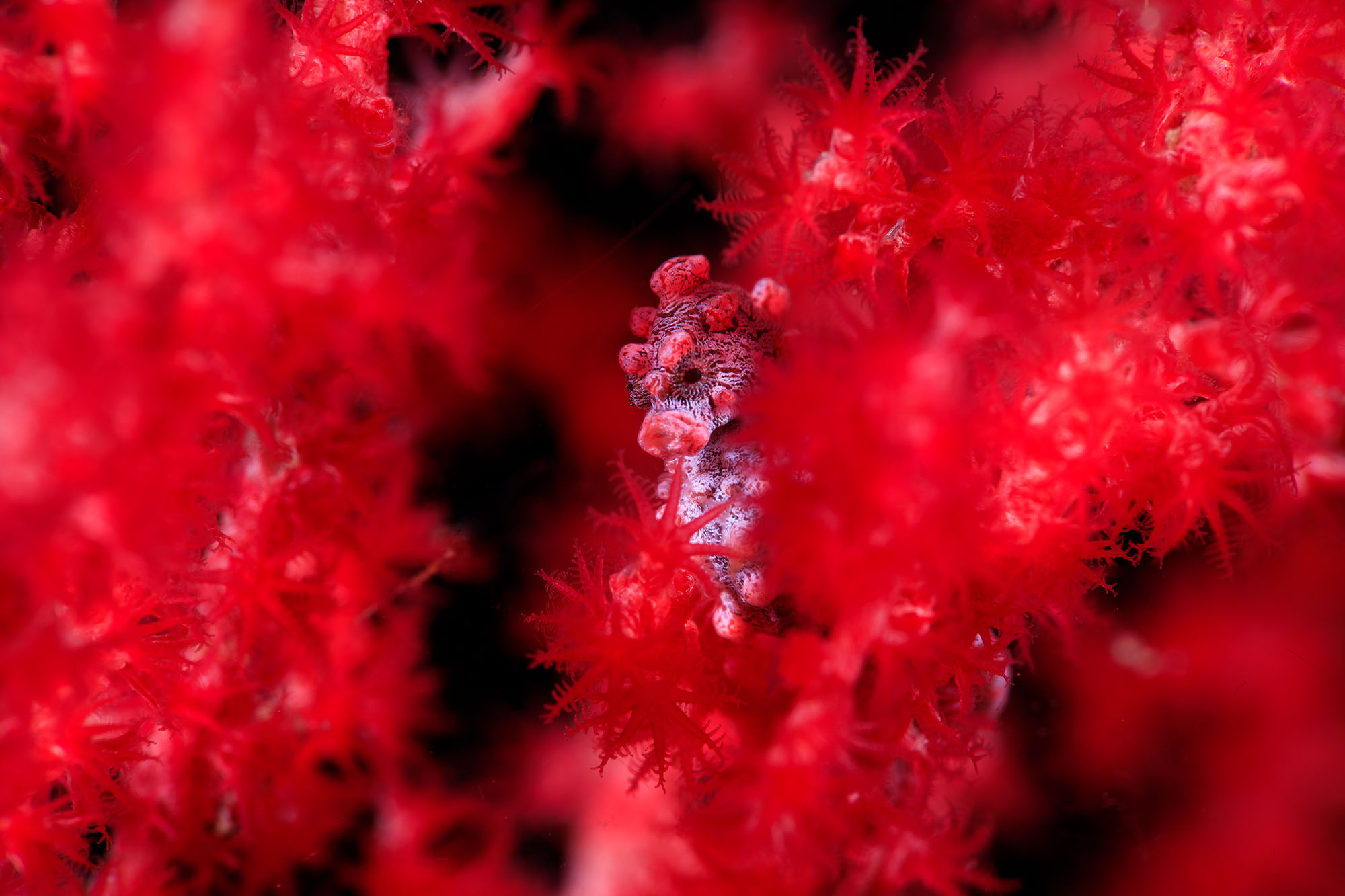Why Do Seahorses Look Like Horses?
Dive in to learn more about seahorses.

What ocean animal has a tail like a monkey, looks like a horse and can use camouflage like an octopus? A seahorse! Today, we’re diving into yet another ocean mystery: why do we have horses in the sea? When I tell my kids that seahorses are actually fish, they don’t believe me. They argue that they don’t look like fish and they certainly don’t swim like fish.
So, how is it that we have fish that look like horses in the ocean? Why did seahorses evolve this way? Let’s explore.
Why do seahorses look like horses?
To help them swim fast?
Absolutely not! Did you know that seahorses are terrible swimmers? They are slow, awkward and have a pretty tough time getting around. Because of this, seahorses are commonly found using their tails to wrap around underwater plants and corals. For the most part, they stay in one place. If you are wondering how seahorses have been found traveling long distances, you are sharp! Excellent question. Seahorses are known to be hitchhikers. They will use their monkey-like tails to attach themselves to objects like floating seaweed (and, unfortunately, debris), allowing them to travel much further than they could on their own. Clever, huh?
To help them adapt to living in warm, tropical waters?
Interesting idea, but no. Seahorses are not only found living in warm, tropical waters; they can be found in temperate waters, too, like those found off the coasts of New Zealand, Argentina, Eastern Canada and the U.K. The genus Hippocampus includes 47 species of seahorses, and almost 1/3 of those were discovered within the last decade. There are probably even more that haven’t yet been discovered!

So that other fish can ride them?
Funny, but no! While Aquaman is often seen riding his giant pet seahorse named Storm, this is just a cartoon. Divers have never documented fish (or other beings) riding actual seahorses.
To allow them to hunt prey?
YES! The unique bodily shape of the seahorses gives them a stealthy advantage over their prey. Their horse-shaped head minimizes water disturbances, allowing them to move through the water silently, creeping up on their unsuspecting prey. Wild fact: seahorses have a predatory kill rate of around 90%. To put that into perspective, sharks have a kill rate of approximately 50% and lions have a kill rate of about 25%. Well now, the seahorse has earned some serious bragging rights over the world’s top predators!
So, there you have it—seahorses look like horses because this shape allows them to efficiently hunt their prey. With that, it will come as no surprise to you that seahorses need a clean, healthy ocean environment in order to live and thrive.

You can help seahorses
If you read this blog closely, you surely picked up on the fact that seahorses often ‘grab’ moving items in the water column in order to travel. While we’d like to think these ‘items’ are only natural objects like seagrass and seaweed, various forms of marine debris are also unfortunately included in the list of such items. To highlight this growing problem, there is a very sad photo of a seahorse clinging to a Q-tip that truly paints this problem as all the more real.
We all need to do our part to keep the ocean free of marine debris for seahorses and all the other marine life that call our ocean home. If you’re wondering how you can help and aren’t sure where to start, we have a few resources to get you started.
- Clean Swell: Join a global movement to keep beaches, waterways and the ocean trash free.
- Blog: Six Ways You Can Save the Ocean From Home
- Pledge: Skip the Straw
- Take action: Stem the Tide of Ocean Plastics
- Learn more: Visit our Trash Free Seas® program pages